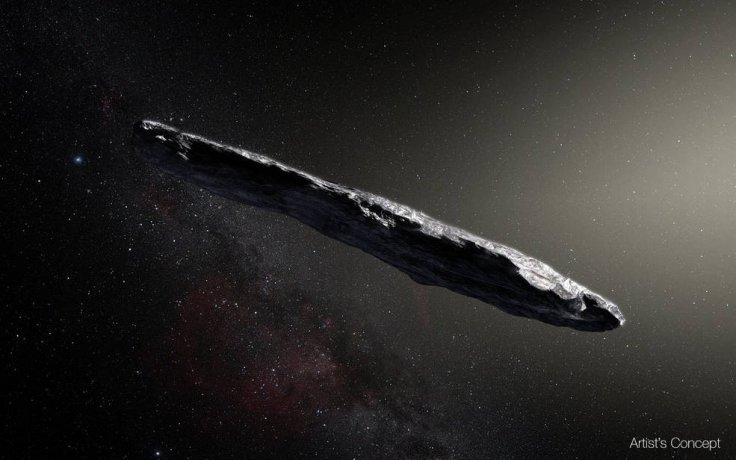
Oumuamua, the first ever interstellar object which reached our solar system has been perplexing the researchers since its discovery on October 19. Soon after the discovery, a research team funded by Russian billionaire Yuri Milner started further studies on Oumuamua to determine whether it is an alien spaceship, which reached our solar system.
Water trapped under the crust of Oumuamua
Now, a new study has suggested that water might have been trapped under the thick carbon-rich coating of its surface. This new finding is in contrast to the recent observations which found no outgassing as the object approaches the sun; an indication that there will be no or less water on it.
According to the new study, the formation of carbon shell on the surface of Oumuamua might have played a crucial role in trapping water beneath it. The researchers believe that the carbon shell on the surface of this interstellar object has given us the earlier assumption that it has a dry crust, which is void of water.
The researchers claim that Oumuamua's exposure to cosmic rays has played a crucial role in creating an insulation that could have shielded the water interior.
Mysteries surrounding Oumuamua continue
Unlike other comets and asteroids, Oumuamua is very long and is thin in shape. According to initial studies conducted on the object, it has been learned that the length of the newly discovered object is ten times more than its width. Researchers assume that Oumuamua is more than 400 meters long, while the mass of the object still remains undetermined.
"We don't know its mass and so it could still be fragile and have a relatively low density. That would still be consistent with the rate at which it is spinning - which is about once every seven-and-a-half hours or so. Something with the strength of talcum powder would hold itself together at that speed," said Prof Alan Fitzsimmons, one of the authors of the study, which is published in the Nature Magazine.
On the other hand, another study conducted by researchers at the Budapest University of Technology in Hungary suggests that the objects present shape is due to its voyage over interstellar space at a very high speed, where it underwent collisions with space grains and other cosmic objects.









